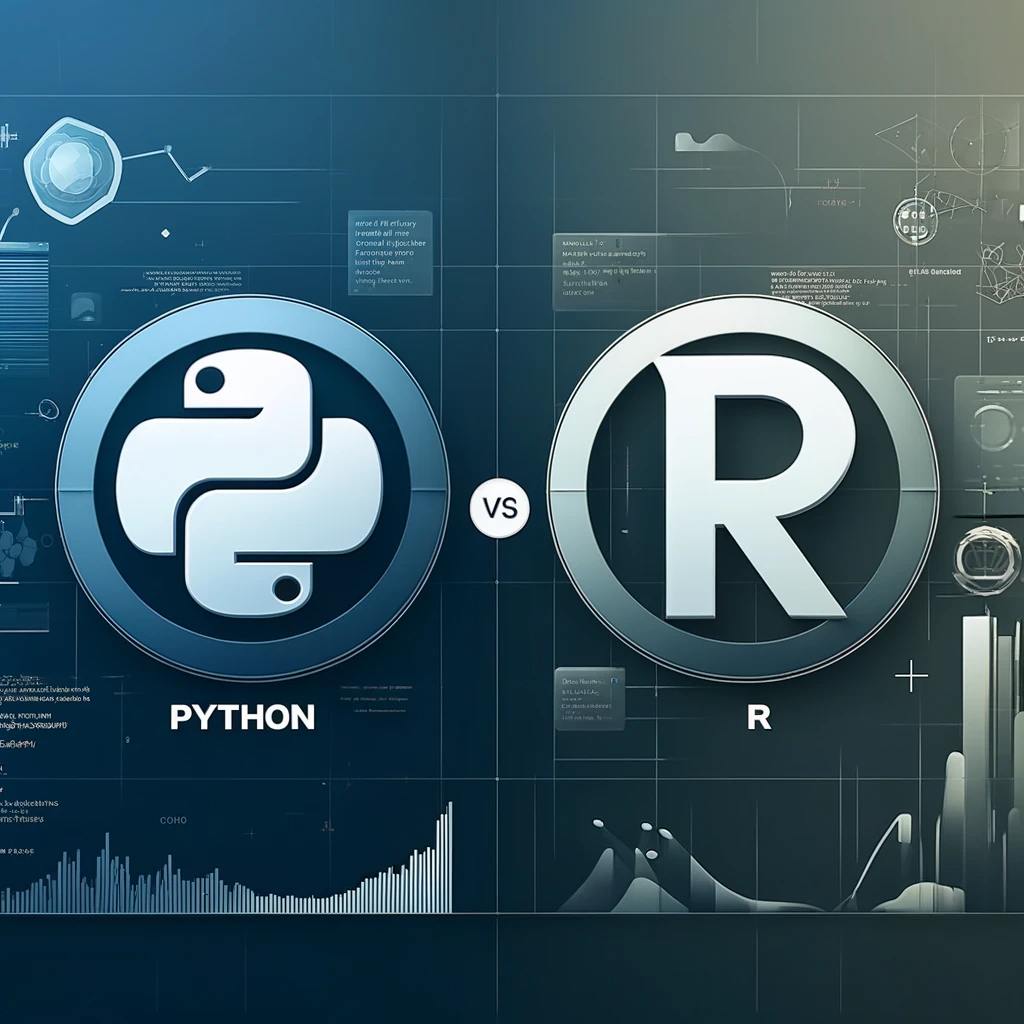Python and R: A Comprehensive Comparison for Data Enthusiasts

2024-11-22
Python and R are two powerful programming languages that have transformed the landscape of data science and analytics. Both are widely used, but they cater to slightly different needs and preferences. For data enthusiasts and professionals alike, understanding the strengths and applications of Python and R can help in choosing the right tool for a given task.
A Brief History
Python, developed by Guido van Rossum in 1991, was designed with simplicity and readability in mind. It is a general-purpose language that has gained immense popularity across various domains, including web development, machine learning, and data science.
R, on the other hand, was created in 1995 by statisticians Ross Ihaka and Robert Gentleman. Its primary focus is statistical analysis and data visualization. Rooted in academia, R quickly became the go-to language for statisticians and researchers.
Ease of Learning
Python is often hailed as one of the easiest programming languages to learn due to its clean and intuitive syntax. Beginners can quickly pick it up and start writing functional code. Python’s versatility extends its appeal beyond data science, making it a great starting point for individuals new to programming.
R, while slightly more challenging for beginners, is incredibly powerful for statistical analysis. Its syntax may seem unconventional to those with prior programming experience, but its focused functionality makes it worth the learning curve for statisticians and data analysts.
Libraries and Ecosystem
Both Python and R boast robust ecosystems with numerous libraries and frameworks tailored for data analysis.
- Python Libraries:
Python has a wide array of libraries such as:- Pandas for data manipulation and analysis.
- NumPy for numerical computations.
- Matplotlib and Seaborn for data visualization.
- Scikit-learn and TensorFlow for machine learning and deep learning.
Python’s ecosystem is also enriched by frameworks like Flask and Django for web development, making it a versatile tool for end-to-end applications.
- R Packages:
R specializes in statistical computing and visualization, with packages like:- ggplot2 for elegant data visualizations.
- dplyr and tidyr for data manipulation.
- caret for machine learning.
- shiny for building interactive web applications directly from R.
R’s focus on data and visualization is unmatched, particularly in academic and research settings.
Performance
Performance often depends on the task at hand:
- Python is generally faster for tasks involving large datasets, thanks to optimized libraries like NumPy and SciPy that leverage low-level programming languages such as C and Fortran.
- R excels in statistical modeling and data visualization but may struggle with extremely large datasets. However, packages like data.table and integrations with big data tools like Apache Spark have improved its scalability.
Visualization Capabilities
Visualization is where R truly shines. Its native packages, like ggplot2 and lattice, allow users to create publication-quality graphs with minimal effort.
Python’s visualization libraries, such as Matplotlib and Seaborn, have come a long way, offering flexibility and customization. For interactive visualizations, Python’s Plotly and Bokeh are excellent choices, giving it an edge in modern, dynamic dashboards.
Community and Support
Both Python and R have thriving communities that provide extensive support and resources:
- Python’s community is more diverse, spanning developers from various domains such as software engineering, machine learning, and automation.
- R’s community is deeply rooted in academia and research, offering highly specialized expertise in statistics and data analysis.
Both languages benefit from extensive documentation, online forums, and tutorials. Python's Stack Overflow threads tend to be more abundant due to its larger user base.
Integration and Compatibility
Python’s versatility allows it to integrate seamlessly with other technologies like databases, cloud platforms, and APIs. This makes Python ideal for building full-stack solutions.
R, while primarily focused on data analysis, has improved its integration capabilities through tools like RStudio Connect and compatibility with Python via packages such as reticulate.
Job Market and Demand
Python leads in demand, especially in roles such as data scientist, machine learning engineer, and software developer. Its general-purpose nature ensures job opportunities across a wide range of industries.
R remains a sought-after skill in academia, healthcare, pharmaceuticals, and other research-intensive industries. While its job market is smaller, it is highly valued in specialized roles.
Which Should You Choose?
The choice between Python and R depends on your goals:
Choose Python if:
- You are a beginner looking for a versatile programming language.
- You aim to work in machine learning, artificial intelligence, or software development.
- You want to build end-to-end applications.
Choose R if:
- Your focus is on statistical analysis and high-quality visualizations.
- You are in academia or research-oriented fields.
- You prefer a tool tailored for data-centric tasks.
The Best of Both Worlds
For those who can’t decide, the good news is that you don’t have to choose just one! Both Python and R can be integrated into the same workflow using tools like reticulate in R or rpy2 in Python. This allows data professionals to leverage the strengths of both languages in a single project.
Conclusion
Python and R are invaluable tools for data professionals. Python’s versatility and ease of use make it a popular choice for beginners and seasoned programmers alike, while R’s statistical prowess and visualization capabilities cater to the needs of data analysts and researchers.
Ultimately, the best choice depends on your specific goals, background, and project requirements. Whether you choose Python, R, or both, mastering these languages will undoubtedly enhance your data science journey.